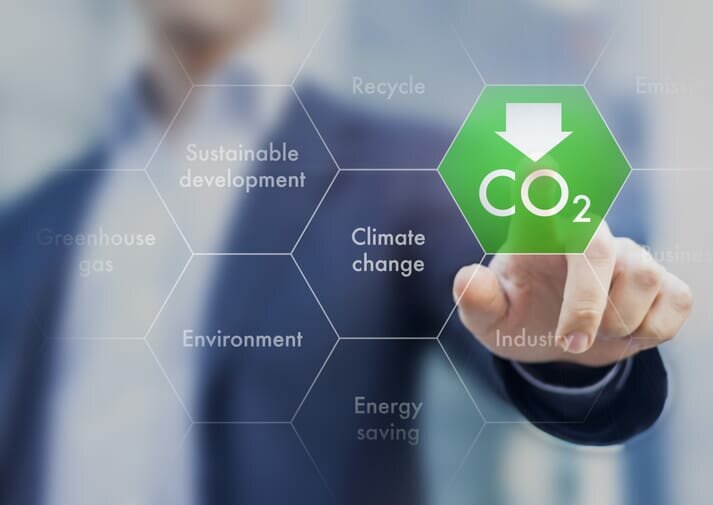The United Nations Climate Change recently released a publication that is in accord with climate action plans as outlined in countries’ National Determined Contributions (NDCs).
The report pointed out that while there is a clear indication that carbon emissions can be reduced over time, countries need to step up in their climate efforts if they are to curb the increase in global temperature beyond the goal of the Paris Agreement-achieving a global temperature of 1.5C by the end of the century.
The Synthesis Report was requested by Parties to the Paris Agreement to assist them in assessing the progress of climate action ahead of the UN Climate Change Conference of the Parties (COP26) this November in Glasgow, Scotland.
The report includes details from all 119 Parties of the Paris Agreement according to their current availability in the interim NDC records as of 30 July 2021 and the details of updated or new NDCs presented by 113 parties. These new or updated NDCs cover about 59% of Parties of the Paris Agreement and account for 49% of global carbon emissions.
For the group of 113 Parties that has new or updated NDCs, the carbon emissions are expected to reduce by 12% in 2030 as compared to 2010. This step is very important as regard reductions pointed out by the International Panel on Climate Change (IPCC), which reckoned that the insufficient global average temperature increases to 1.5C need to cut down on greenhouse gas emissions of 45% in 2030 or to 25% reduction by 2030 to reduce warming by 2C.
Within the group of 113 Parties, only 70 countries specify their GHG objective aim around the middle of the century. This goal will lead to an even greater emissions reduction, of about 26% by 2030 compared to 2010.
To this, Patricia Espinosa, Executive Secretary of UN Climate Change, said, “I congratulate all Parties that have submitted updated or new NDCs.The synthesis shows that countries are making progress towards the Paris Agreement’s temperature goals. This means that the in-built mechanism set up by the Paris Agreement to allow for a gradual increase of ambition is working.”
A good number of NDCs from developing countries contain conditional commitments to reduce emissions, which can only be implemented with access to enhanced financial resources and other support. The study suggests that the full implementation of these components could allow for global emissions to peak by 2030.
The report further proposes that the full execution of these components could make way for global carbon emissions to skyrocket by 2030. As regards adaptation actions covered in the available NDCs, support, in this case, is very vital.
However, the report has some worrying findings. NDCs availability of all 191 Parties put together hinted at a chunk size of global greenhouse gas emissions in 2030 of about 16%. According to the current IPCC discoveries, if actions are not taken, such findings could lead to an increase in temperature of about 2.7C by the end of the century.
According to Espinosa, a 16% increase in carbon emission calls for concern as it is a huge difference with calls by science for a quick, reliable, and huge-scale emission reduction to combat the most severe climate crisis and its implications especially for the vulnerable through the globe.
She added that the latest report visibly points that the NDC groundwork is aiding Parties to improve towards fulfilling their commitments made under the Paris Agreement.
Countries are still lagging behind in NDC submission
Espinosa explained that Parties can present NDCs or update already presented NDCs at any period even in the run-up to COP26. To ensure a current detail at the COP, the UN Climate Change will supply an update to include all NDCs presented on or before 12 October 2021. This update plans to be released on 25 October 2021.
“Knowing how much work on enhancing NDCs has been ongoing, I again call on all Parties that have not yet done so to submit new or updated NDCs. But those Parties that have already made submissions also have the opportunity to revisit their NDCs to increase their level of ambition. The time left before COP26 is short, but I hope we may still see many more NDCs,” she added.
The incoming president of COP26, Alok Sharma also said, “This report is clear: ambitious climate action can avoid the most devastating effects of climate change, but only if all nations act together. Those nations which have submitted new and ambitious climate plans are already bending the curve of emissions downwards by 2030”.
He went on that if no action is taken by all countries involved, especially the developed ones with larger economies, the efforts are likely to be for nothing. The course of history can be changed for the better and he urged them to start acting immediately for themselves and mostly, for the vulnerable countries and the future generations.
NDCs’ new and updated report shows that there is an impact in the standard of details presented both for mitigation and adaptation and intends to be in place with a wider long period, low emission development aims.
The achievement of GHG neutrality, National legislative/ regulatory/ planning processes, and other international frameworks like Sustainable Development Goals (SDGs). In addition to this, the non-state participants and other partners are getting more inclusive in the NDC groundwork and execution processes.




















